Statute of Limitations and Bad Faith Claims: Factors to Consider
May 16, 2022 —
Anastasiya Collins - Saxe Doernberger & Vita How much time do our clients have to bring a bad faith action against an insurer? Although we are not frequently asked this question, it is one that we constantly analyze before asserting a bad faith claim.
To answer this question, we look to the statute of limitations, which is a law passed by a state legislative body that sets the maximum amount of time for a party to bring a claim based upon a particular cause of action. For policyholders, knowing which statute of limitations applies to their bad faith claim is critical because it indicates whether it is possible to initiate legal proceedings. In addition, it determines the amount in damages available in case of a successful resolution.
Statute of Limitations in Breach of Contract vs. Tort Claims
One key determinant of a statute of limitations for bad faith is whether the claim is brought as a tort or a breach of contract action. The consequence of framing bad faith as a tort is that a policyholder is not just limited to contract damages. The policyholder can also receive recourse for emotional distress, pain, suffering, punitive damages, attorney’s fees, and other damages that the court may consider appropriate. Unfortunately, however, not every jurisdiction allows plaintiffs to bring bad faith actions as tort claims. While, for example, courts in California, Colorado, and Connecticut allow bad faith claims sounding in tort, courts in jurisdictions such as Tennessee do not.
Read the court decisionRead the full story...Reprinted courtesy of
Anastasiya Collins, Saxe Doernberger & VitaMs. Collins may be contacted at
ACollins@sdvlaw.com
Hawaii Federal District Court Denies Brokers' MSJ on Duties Owed In Construction Defect Case
October 19, 2017 —
Tred R. Eyerly - Insurance Law HawaiiThe federal district court for the District of Hawaii denied the brokers' motion for summary judgment seeking dismissal from claims that they inadequately advised the insured of the law regarding construction defects in Hawaii. Am Auto. Ins. Co. v. Haw. Nut & Bolt, Inc., 2017 U.S. Dist. LEXIS 148571.
Safeway sued Hawaii Nut & Bolt (HNB) and others for construction defects in a newly constructed store. The underlying complaint alleged products liability claims against HNB as the distributor of the "VersaFlex Coating System." HSB had represented that the coating system was adequate for its intended use. The underlying complaint alleged failure of the VersaFlex Coating System in waterproofing the roof deck of the store. After the store opened, water leaks from the roof deck appeared. Safeway alleged they were caused by the cracks and failures in the waterproof membrane in the roof deck.
HNB notified its insurers of the claims. The insurers defended HNB during the litigation subject to reservation of rights letters.
Read the court decisionRead the full story...Reprinted courtesy of
Tred R. Eyerly, Insurance Law HawaiiMr. Eyerly may be contacted at
te@hawaiilawyer.com
Unlicensed Contractors Caught in a Sting Operation
March 19, 2015 —
Beverley BevenFlorez-CDJ STAFFSeven suspects were cited for contracting without a license after being caught by the Contractors State License Board (CSLB), reported CBS local news, and eighty-five people may face criminal charges. The undercover sting operations occurred over a two day period in Rancho Mirage, California. A hearing is scheduled for June 3rd at Riverside County Superior Court.
CSLB Registrar Cindi A. Christenson told CBS, “Several of the suspects we targeted turned out to be repeat offenders and individuals with a criminal history and drug violations. If you knew their backgrounds, you'd never allow them near your home or family."
Read the court decisionRead the full story...Reprinted courtesy of
Legal Battle Kicks Off to Minimize Baltimore Bridge Liabilities
May 06, 2024 —
Brendan Murray - BloombergThe owner of the ship that destroyed Baltimore’s Francis Scott Key Bridge, causing the indefinite closure of the port a week ago, is seeking to limit its liability to about $44 million.
According to reporting by my Bloomberg News colleagues citing legal experts, the company — Grace Ocean — could face hundreds of millions of dollars in damage claims.
On Monday it filed a petition jointly with Synergy Marine, which was operating the Singapore-flagged container ship Dali. They claim the collapse of the bridge was “not due to any fault, neglect, or want of care” of the companies and that they shouldn’t be held liable for any loss or damage from the disaster.
Read the court decisionRead the full story...Reprinted courtesy of
Brendan Murray, Bloomberg
Foundation Arbitration Doesn’t Preclude Suing Over Cracks
March 28, 2012 —
CDJ STAFFThe Louisiana Court of Appeals has reversed the decision of a lower court, allowing a construction defect case to go through. In Greer v. Town Construction Company, the Greers hired Town Construction to build a home in Baton Rouge. The business relationship went sour, with disputes over “costs, change orders, workmanship, and timeliness issues.”
�Town Construction filed an arbitration claim for the unpaid contract balance. In the counterclaim, the Greers made claims of mold and mildew problems, and wall cracks that they attributed to a “structural defect in the foundation.” In arbitration, Town Construction was awarded the full contract balance plus extra costs and interest, while the Greers were awarded for their structural claims.
�Three years later, the Greers found additional cracks and filed a suit against Town Construction. Town Construction argued that the Greer’s lawsuit should be dismissed, as the claims had already been through the arbitration process. The district court agreed with Town Construction and dismissed the suit.
�The appeals court noted that the Greers would have no ground for a suit if the arbitration was a “valid and final judgment,” and went on to note that there was no evidence in the trial record that the arbitration met this qualification. The court noted that although it was clear that both parties had agreed to the decisions of the arbiter, under Louisiana law, arbitration is not final until it has been “rendered by a court with jurisdiction over subject mater and over parties.”
�The court remanded the case to the lower court, noting that “the district court is obligated to first determine whether a valid arbitration award is in existence and had been confirmed before considering the merits of the exception. The court noted that their decision “should not be read to express any opinion as to the merits of the claims or as to the propriety of damages sought in the Greer’s lawsuit.”
Read the court’s decision…
� Read the court decisionRead the full story...Reprinted courtesy of
2019’s Biggest Labor and Employment Moves Affecting Construction
January 27, 2020 —
Micah Dawson - Construction ExecutiveThe construction industry is fueled by change, which is the only constant in life and construction. Still, continuous change makes compliance with state and federal laws and regulations more difficult.
While contractors may thrive on the frantic pace, sometimes it is good to look back and ensure they have an understanding of, and are complying with, the newest regulations and laws.
Top 10 Stories Dominating Employment Law in Construction
1. Trio of Federal Joint Employment Rules Expected in December 2019
Joint employment took center stage during the November 20, 2019 release of the Fall Regulatory Agenda, as three separate federal agencies announced plans to move forward with revised joint employment rules in December. While the Department of Labor and the National Labor Relations Board had already released versions of their draft rules, the Equal Employment Opportunity Commission also announced that it would weigh in on the topic before the end of 2019. As of January 10, 2020, the EEOC had not done so.
2. NLRB Tightens Union Access to Employer Property
In a ruling that levels the labor relations playing field, the NLRB ruled that employers could rightfully eject outside union representatives soliciting petition signatures from a shared shopping center parking area. When read in conjunction with an earlier 2019 decision conferring greater rights to limit on-premises union activity by abolishing the “public space” exception, the NLRB has significantly restricted union access to private employer property.
Reprinted courtesy of
Micah Dawson, Construction Executive, a publication of Associated Builders and Contractors. All rights reserved.
Read the court decisionRead the full story...Reprinted courtesy of
Mr. Dawson may be contacted at
mdawson@fisherphillips.com
Public Policy Prevails: Homebuilders and Homebuyers Cannot Agree to Disclaim Implied Warranty of Habitability in Arizona
November 01, 2022 —
Ryan Bennett - The Subrogation StrategistIn Zambrano v. M & RC II LLC, et al., 2022 Ariz. LEXIS 309, the Supreme Court of Arizona held that a homebuilder and homebuyer could not waive or disclaim the implied warranty of workmanship and habitability. While the court would normally enforce a contract between two parties – even if one side made a “bad deal” – they will not do so if the contract’s terms are against public policy.
In this case, Tina Zambrano (Zambrano) signed a purchase agreement with the homebuilder to buy a newly built home. The agreement included provisions which expressly disclaimed any implied warranties, including the warranty of habitability and workmanship. After the purchase, Zambrano claimed that there were construction defects within the home, including popped nails in the drywall and issues with the home’s foundation. Zambrano sued the homebuilder for breach of the implied warranty of workmanship and habitability. The homebuilder moved for summary judgment based on the waivers within the contract and the trial court, agreeing that the waivers applied, dismissed the case. Zambrano appealed and the appellate court reversed the trial court’s decision. The appellate court specifically explained that Arizona has a public policy interest in protecting consumers.
Read the court decisionRead the full story...Reprinted courtesy of
Ryan Bennett, White and Williams LLPMr. Bennett may be contacted at
bennettr@whiteandwilliams.com
20 Years of BHA at West Coast Casualty's CD Seminar: Chronicling BHA's Innovative Exhibits
May 03, 2018 —
Beverley BevenFlorez-CDJ STAFFThe Bert L. Howe & Associates, Inc., (BHA) exhibit has been a fixture at West Coast Casualty's Construction Defect Seminar since the mid-1990's. Through the years, BHA has updated their display, but no matter what year, you could count on the BHA exhibit to provide a not-to-be-missed experience.
2008-BHA's sleek, rear projection display includes a screen that promotes the firm's capabilities that can be seen throughout the exhibit hall. This would be one of many innovations BHA has brought to the West Coast Casualty seminar.
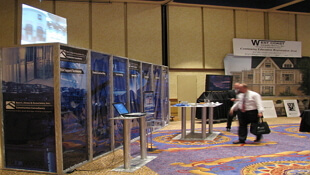
2009-With the success of the rear screen projection, BHA adds additional monitors to provide attendees with more information about BHA.
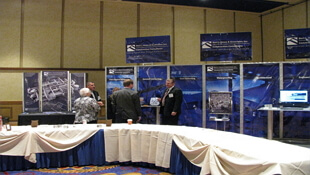
2010-BHA adds an interpretive professional development exhibit targeted to Building Envelope issues allowing adjusters and other non-construction professionals hands on access to the systems and components at the heart of many related such claims.


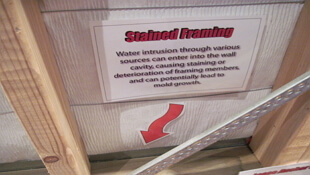
2011-BHA's Swing for Charity challenge is born.

2012-Always innovating, BHA expands its rear projection and professional development offerings to West Coast attendees.

2013-BHA showcases additional capabilities with a twenty-four foot, custom, convex, immersive video experience.

2014-BHA adds an iPhone display to give a hands-on demonstration of their data collection methods.
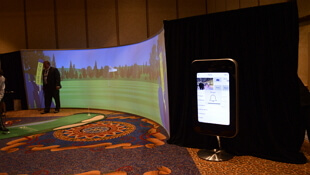
2015-BHA's twenty-four foot , custom, convex, immersive video experience was elevated with two additional rear projection screens, reflecting BHA's newest capabilities and services.

2016-BHA dazzles attendees with their new exhibit comprised of more than 15 integrated, high definition, LCD displays. iPads are stationed on tables to conveniently demonstrate BHA's data collection processes.
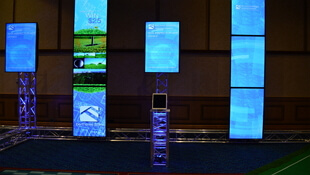
2017-BHA's Swing for Charity Golf Challenge raised $2,225.00 for the National Coalition for Homeless Veterans and $1,900 for Final Salute.
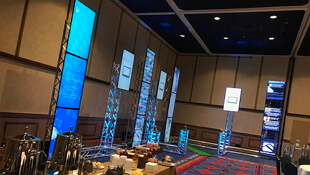
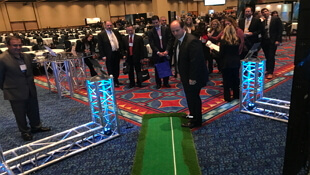
Read the court decisionRead the full story...Reprinted courtesy of




































































